Click on images to enlarge

habit (Photo: Sheldon Navie)

habit (Photo: Sheldon Navie)
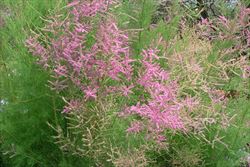
habit in flower (Photo: Sheldon Navie)
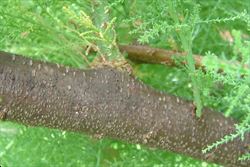
older woody stem (Photo: Sheldon Navie)
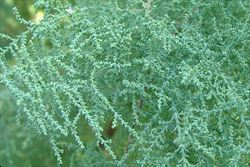
branchlets with small bluish-green leaves (Photo: Sheldon Navie)

younger stems and leaves (Photo: Sheldon Navie)
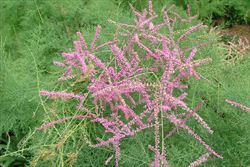
flower clusters (Photo: Sheldon Navie)

flower clusters (Photo: Sheldon Navie)
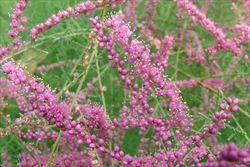
flowers and flower buds (Photo: Sheldon Navie)
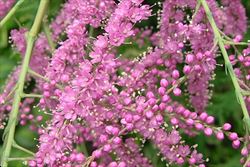
close-up of flowers and flower buds (Photo: Sheldon Navie)

immature fruit (Photo: Sheldon Navie)
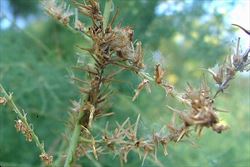
close-up of mature fruit releasing tiny seeds topped with fluffy hairs (Photo: Sheldon Navie)
Scientific Name
Tamarix ramosissima Ledeb.
Synonyms
Tamarix aphylla (L.) Karsten (misapplied)Tamarix pentandra Pall.
Family
Tamaricaceae
Common Names
five-stamen tamarix, pink tamarisk, salt cedar, saltcedar, tamarisk
Origin
Native to eastern Europe (i.e. Moldova, western Russia and the Ukraine), western Asia (i.e. Afghanistan, Iran, Iraq, Turkey, Armenia, Azerbaijan, Kazakhstan, Kyrgyzstan, Tajikistan, Turkmenistan and Uzbekistan), western Pakistan, Mongolia, China and Korea.
Naturalised Distribution
Widely naturalised, but scattered, in southern Australia (i.e. in some parts of southern and central New South Wales, in south-eastern South Australia, and in many parts of Victoria). Possibly also naturalised in other parts of South Australia and in Western Australia.
Also naturalised overseas in southern Africa (i.e. South Africa), Mexico and large parts of the USA.
Notes
Salt cedar (Tamarix ramosissima) is

